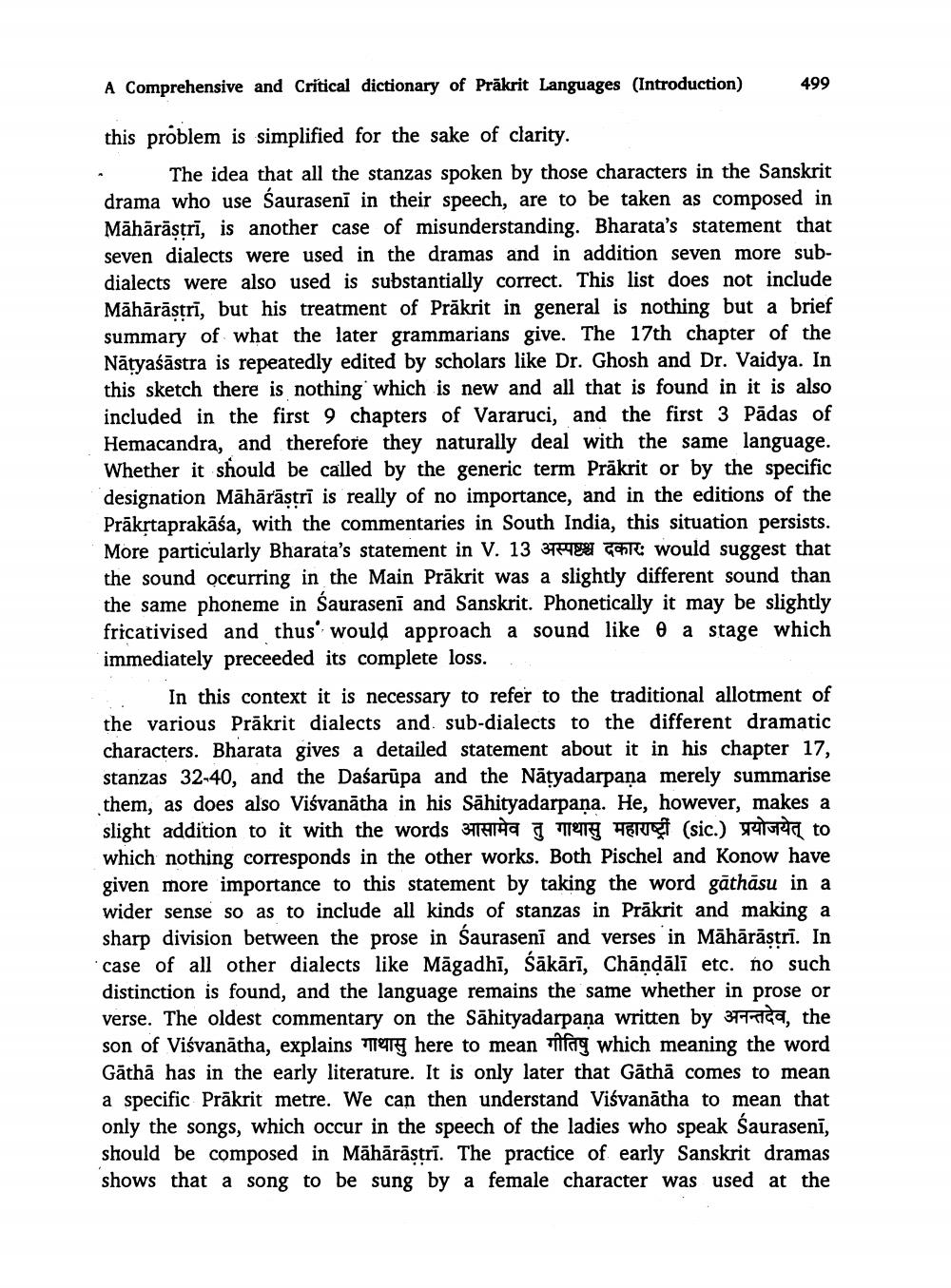________________
A Comprehensive and Critical dictionary of Prākrit Languages (Introduction)
499
•
The
this problem is simplified for the sake of clarity.
The idea that all the stanzas spoken by those characters in the Sanskrit drama who use Sauraseni in their speech, are to be taken as composed in Māhārāstrī, is another case of misunderstanding. Bharata's statement that seven dialects were used in the dramas and in addition seven more subdialects were also used is substantially correct. This list does not include Māhārāstrī, but his treatment of Prākrit in general is nothing but a brief summary of what the later grammarians give. The 17th chapter of the Nātyaśāstra is repeatedly edited by scholars like Dr. Ghosh and Dr. Vaidya. In this sketch there is nothing which is new and all that is found in it is also included in the first 9 chapters of Vararuci, and the first 3 Pädas of Hemacandra, and therefore they naturally deal with the same language. Whether it should be called by the generic term Prākrit or by the specific designation Māhārāstrī is really of no importance, and in the editions of the Prākrtaprakāśa, with the commentaries in South India, this situation persists. More particularly Bharata's statement in V. 13 372489 Gal: would suggest that the sound occurring in the Main Prākrit was a slightly different sound than the same phoneme in Saurasenī and Sanskrit. Phonetically it may be slightly fricativised and thus' would approach a sound like a stage which immediately preceeded its complete loss.
In this context it is necessary to refer to the traditional allotment of the various Prākrit dialects and sub-dialects to the different dramatic characters. Bharata gives a detailed statement about it in his chapter 17, stanzas 32-40, and the Daśarūpa and the Natyadarpana merely summarise them, as does also Viśvanātha in his Sāhityadarpana. He, however, makes a slight addition to it with the words आसामेव तु गाथासु महाराष्ट्री (sic.) प्रयोजयेत् to which nothing corresponds in the other works. Both Pischel and Konow have given more importance to this statement by taking the word gāthāsu in a wider sense so as to include all kinds of stanzas in Prākrit and making a sharp division between the prose in Saurasenī and verses in Māhārāstrī. In case of all other dialects like Māgadhī, sākārī, Chāņdālī etc. no such distinction is found, and the language remains the same whether in prose or verse. The oldest commentary on the Sāhityadarpana written by 3TIGA, the son of Viśvanātha, explains er here to mean farg which meaning the word Gātha has in the early literature. It is only later that Gāthā comes to mean a specific Prākrit metre. We can then understand Viśvanātha to mean that only the songs, which occur in the speech of the ladies who speak Saurasenī, should be composed in Māhārāstrī. The practice of early Sanskrit dramas shows that a song to be sung by a female character was used at the




